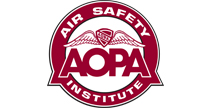Heavy on experience: DPE, FAA inspector crash after takeoff
ANC09FA062
 By David Kenny
By David Kenny
As pilots, we value experience. Quantity and diversity of flight time both serve to season our judgment, improve our understanding, and teach us to stay calm in the face of the unexpected. But there are no guarantees. One bad minute in the cockpit can still overwhelm all those hours in the logbook, especially when circumstances don’t leave much room for error.
On July 14, 2009, a Zenair STOL CH 701 floatplane crashed immediately after taking off from Kalmbach Lake in south central Alaska. Both the pilot and his passenger were killed. No one witnessed the actual impact, but a neighbor found the burning wreckage in the middle of a dirt road and called 911. The road lay between two steep, forested banks, neither which showed any sign of having been struck by the aircraft. This and the pattern of damage in what was left of the floats and wings led investigators to conclude that it had hit the ground nose-first in a nearly vertical descent, most likely after a low-altitude stall.
The accident site was perhaps a hundred yards from the southwest end of the lake. The resulting fire was hot enough to melt most of the aluminum skin forward of the empennage, and the fire department estimated that it went on burning for 30 to 40 minutes. The shattered pieces of the three-bladed composite propeller indicated that the engine had been making power when the propeller hit the ground, and the cables remained intact between all control surfaces and the area where the cabin had been.
The 72-year-old airline transport pilot was rated for airplane single-engine land, multiengine land, and single-engine sea. He held flight and ground instructor certificates and a repairman’s certificate for his experimental airplane. His logbooks were not recovered and his experience in make and model wasn’t reported, but more than three years earlier he had claimed 27,200 hours of flight time on his medical application.
He was also a designated pilot examiner, and his passenger turned out to be an FAA inspector who had come up from Oklahoma City to give him his annual proficiency checkride. According to the pilot’s wife, who was in California at the time, after the checkride the two planned to go fishing at another lake about 45 miles further west. Remnants of fishing tackle and other gear were found among the wreckage.
Based on the reported weights of the two men, the NTSB investigator calculated that even with the minimum fuel needed for the flight test and no luggage, the airplane had been at least 36 pounds overweight. Adding in enough fuel for another hour and a half’s round trip out to fish, plus tackle and other personal effects and the survival kit required by Alaska law, would have put the airplane a good 10 percent above its certificated maximum gross weight of 1,100 pounds.
The airplane’s logs indicated that an overhauled engine had been installed barely a month earlier, and the pilot had recently told a neighbor that after repairs to the carburetor, “the airplane was running much better.” That same neighbor saw the takeoff run of the accident flight, though not the takeoff itself. Though the engine “sounded like it was running fine,” the airplane passed its usual lift-off point and continued out of sight, still on the water. A stand of trees, tall brush, and a hill obstructed the departure from the far end of the lake.
Zenith’s advertising says that the CH 701 can climb at angles up to 30 degrees, stalling at just 30 mph with two on board. But those figures are based on an aircraft at maximum gross with a perfectly running engine. Whether this airplane’s engine was running perfectly or not, its pilot doesn’t seem to have managed to get its extra weight off the water with enough room to avoid having to make a maximum-performance climb, or to have extracted the climb performance he then needed to clear the terrain safely.